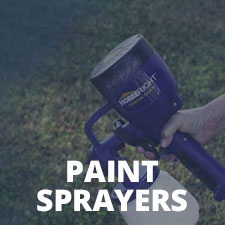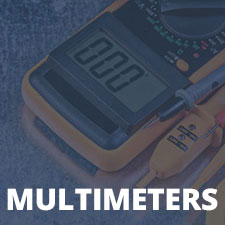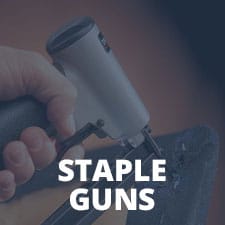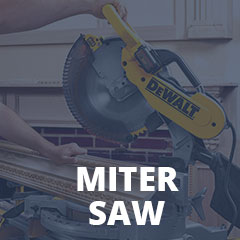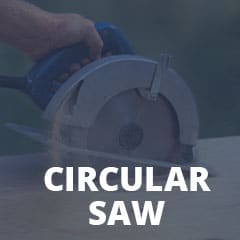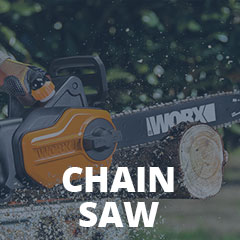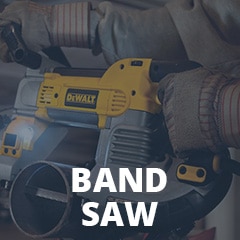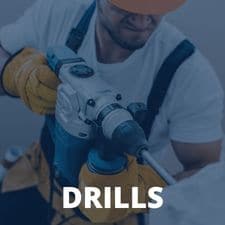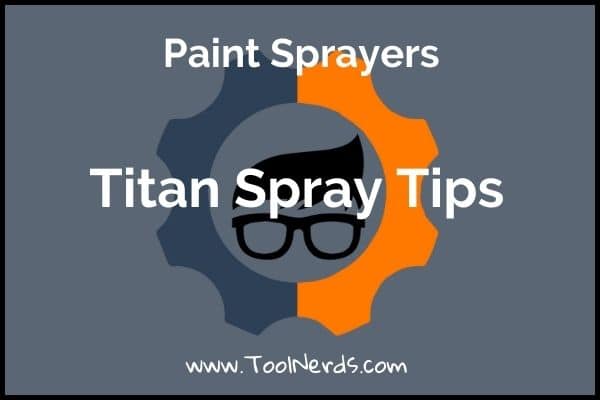
Airless Paint Sprayer Tip Sizes
You will find three numbers stamped on airless sprayer nozzles. These denote the width of the fan pattern they can spray and the size of the opening, or aperture, that atomized paint passes through. Here’s how to interpret these numbers and what they represent:
The first number in the sequence multiplied by two indicates the width of the fan pattern when spraying about 12 inches from the surface.
For example:
-
- A 215 tip dispenses a four-inch fan pattern (2 x 2)
- A 311 nozzle produces a six-inch fan pattern (3 x 2)
- A 413 spray tip results in an eight-inch fan pattern (4 x 2)
You can also work in metric by multiplying the first number by five. For example, a 513 spray tip indicates a fan pattern of five multiplied by five, equalling 25 centimeters.
Another thing this first number tells us is the angle the spray is dispensed at when the spray gun is held level. To figure this one out, add a zero to the number: a number 2 will be 20 degrees, 3 is 30 degrees, and so on.
Having explained all that, keep in mind that these figures are not set in stone. There can be a variance of up to two inches either way depending on the pressure output and the medium you’re spraying.
Spray Tip Openings
The aperture (opening) of a spray tip atomizes your chosen material into tiny droplets creating a fine mist — you could say this is where the magic happens. Along with its best buddy, air pressure, the aperture also controls how much paint is dispensed. Just like any other container, the larger the hole, the more liquid can pass through.
To identify the aperture of a nozzle, look at the last two numbers stamped on the spray tip. These indicate the aperture’s width in thousands of an inch.
For example:
-
- 215 spray tips measure 15 thousandths of an inch (0.015).
- 317 nozzles are 17 thousandths of an inch (0.017).
- 435 paint sprayer tips measure 35 thousandths of an inch(0.035).
Titan Spray Tip Chart
| TIP SIZE | FAN PATTERN WIDTH (inches) | APERTURE (thousandths of an inch) | SPRAY ANGLE (degrees) |
|---|---|---|---|
| 107 | 2 | 0.017 | 10 |
| 211 | 4 | 0.011 | 20 |
| 213 | 4 | 0.013 | 20 |
| 215 | 4 | 0.015 | 20 |
| 217 | 4 | 0.017 | 20 |
| 311 | 6 | 0.011 | 30 |
| 313 | 6 | 0.013 | 30 |
| 315 | 6 | 0.015 | 30 |
| 411 | 8 | 0.011 | 40 |
| 413 | 8 | 0.013 | 40 |
| 415 | 8 | 0.015 | 40 |
| 515 | 10 | 0.015 | 50 |
| 517 | 10 | 0.017 | 50 |
| 519 | 10 | 0.019 | 50 |
| 521 | 10 | 0.021 | 50 |
| 535 | 10 | 0.035 | 50 |
| 619 | 12 | 0.019 | 60 |
| 623 | 12 | 0.023 | 60 |
| 627 | 12 | 0.027 | 60 |
| 713 | 14 | 0.013 | 70 |
| 735 | 14 | 0.035 | 70 |
| 811 | 16 | 0.011 | 80 |
| 862 | 16 | 0.062 | 80 |
| 913 | 18 | 0.013 | 90 |
| 962 | 18 | 0.062 | 90 |
| 1017 | 20 | 0.017 | 100 |
| 1031 | 20 | 0.031 | 100 |
| 1136 | 22 | 0.036 | 110 |
| 1213 | 24 | 0.013 | 120 |
| 1336 | 26 | 0.036 | 130 |
Titan Airless Sprayer Tip Sizes and Viscosity
| THIN | 2Varnish, water-based sealers, clear coat lacquer, stain, primer |
|---|---|
| MEDIUM | Latex, oil-based enamel, primer oils, clear acrylics, fillers, primer |
| HEAVY | Polymers, heavy latex, smooth elastomeric, anti-corrosive paint, |
| heavy fillers | |
| VERY HEAVY | Block fillers, elastomerics, anti-corrosive paint, fire retardants, |
Titan Airless Sprayer Tip Chart Range for Various Materials
| MATERIAL TYPE | MATERIAL THICKNESS | TIP SIZE (last two numbers) |
|---|---|---|
| Clear Lacquer | Thin | 09 - 11 |
| Varnish (Low VOC) | Thin | 09 - 11 |
| Shellac | Thin | 09 - 13 |
| Transparent Stain | Thin | 09 - 13 |
| Water-Based Sealants | Thin | 09 - 13 |
| Water-Based Lacquer | Medium | 12 - 14 |
| Clear Acrylics | Medium | 12 - 14 |
| 100% Acrylic for Interior, Latex | Medium | 13 – 15 |
| Polyurethane | Medium | 13 – 15 |
| Oil-based Enamels | Medium | 13 – 15 |
| Solid Stain | Medium | 13 – 15 |
| Low VOC Varnish | Medium | 13 – 15 |
| Latex (Primer, Interior, and Exterior) | Medium | 15 - 17 |
| Oil Based Primer | Medium | 17 - 19 |
| Heavy Latex | Heavy | 21 - 25 |
| Smooth Elastomerics | Heavy | 21 - 25 |
| Block Fillers | Very Heavy | 25 - 39 |
| Elastomerics | Very Heavy | 25 - 39 |
| Intumescents (fire retardant) coatings | Heavy/Very Heavy | 17 - 39 |
Titan Spray Guide Tip Size
Titan airless tips come in nine different models with a wide choice of sizes for each model. Let’s look at each range now.
1. Titan HEA Tips — TR1 330 Series
2. Titan Standard Reversible Spray Tips — TR1 695 Series
3. Titan High-Pressure Reversible Spray Tips — TR1 696 Series
4. Titan Line Striping Reversible Spray Tips — TR1 697 Series
5. Titan Reversible Spray Tips — TR2 692 Series
6. Titan TR2 Line Striping Tips — 694 Series
7. Titan SC-6+ Widespray — 661 Series
8. Titan SC-6+ Reversible — 662 Series
With over 100 sizes to choose from, there’s sure to be a nozzle in the Titan 662 series to suit your purpose. These versatile, high-quality spray tips offer a consistent spray, saving you money on wasted paint. They can be used for many different coatings, including latex.
Working at a maximum pressure of 5000 PSI, you can achieve flow rates of between 0.05 from the smallest size, right up to 3.26 from the largest. Choose from an extensive range that starts at 107 and ends at 831.
9. Titan SC-6+ Fine Finish — 671 Series
Tips and Tricks for Airless Sprayers
1. Choose the Correct Tip Size for Your Material
2. Select Your Fan Pattern
3. Make Sure Your Airless Sprayer is Compatible
A Guide to Common Airless Spray Tip Applications
| Application | Recommended Tip Size |
|---|---|
| Cupboards and cabinetry | 210, 310 fine-finish spray tips |
| Trims, indoors and outside | 210, 310 fine-finish spray tips |
| Narrow areas like staircase railings. | 108 for a very narrow fan width |
| Tall Baseboards | 510 |
| Doors | 310, 510 fine-finish for doors |
| Fences and sidings | 310 ,510 fine finish, or coating dependent 311, 313, 411, 413, 415 and 515 |
| Ceilings | 619 |
| Interior Walls | 515, 517, 519, 615, 617 and 619 |
| Exterior Walls | 515 up to 617 |
| New Constructions | 619 to 1221 |
| Large Industrial Projects | 621, 1221, or larger |
For information on how to safely use a paint sprayer indoors, check out our in-depth guide here.
That’s our round-up of Titan spray tips complete. You should now be able to select the best Titan nozzle for any project.
If we haven’t answered your questions already, check out the FAQs below.
Titan Spray Tips FAQs
Q: How Often Do I Need To Change My Titan Spray Tip?
On average, a Titan HEA spray tip, or any Titan nozzle, should last for at least 40 to 50 gallons of coating material. However, paint does contain abrasive particles which will eventually change the shape of the tip’s aperture from a thin, long oval to a shorter, rounder opening.
Signs that your tip may need to be replaced include:
-
- Dark and light bands of the area in your spray pattern.
- The fan width is shrinking in size.
- You use more material than you have previously.
Q: What Does an Airless Spray Tip Do?
The nozzle or spray tip takes the high-pressure material delivered by the pump and breaks into tiny particles. The result is a finely atomized paint that gives a smooth, even finish.Q: How Often Should I Clean My Titan Spray Tip?
To get the best from your Titan nozzle, and to prevent clogs and build-ups, you should clean the spray tip after every use. Failing to do this can shorten its lifespan, or even render it useless.Q: What Is a Suitable Titan Spray Gun Tip Size for Automotive Use?
The choice of nozzle for spraying vehicles depends on the paint’s viscosity. For clear lacquers, a tip size with the last two numbers between and 09 and 11 would work. For primers you might a 15 or higher, and for color, look for a 12 to 14. Always check the paint manufacturer’s recommendations.Q: What Is the Best Titan Spray Tip for Doors?
This depends on whether you’re spraying your doors in situ, or whether you have removed them. A 310 Titan tip is a good choice for doors that are still on their hinges. If you’ve taken them off, get the job done quicker with a wider fan pattern from a 510 nozzle.Q: Are Titan Nozzle Sizes the Same as Spray Tip Sizes?
Yes, they are. A nozzle is just another name given to a spray tip, so spray tip sizes are the same as nozzle sizes.

